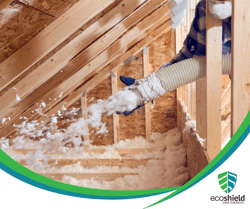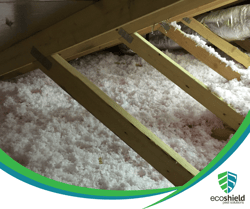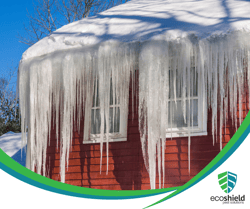 Are you wondering whether attic insulation is truly worth the investment for your home? As homeowners, we all strive to create a comfortable, energy-efficient living space, and the state of your attic insulation plays a pivotal role in achieving this goal. We'll explore the importance of proper attic insulation and how it can significantly impact your home's energy efficiency, comfort, and overall well-being. We'll delve into the benefits of adequate insulation, discuss common insulation materials, and provide insights into assessing your attic's insulation needs. Whether you're looking to reduce your energy bills, maintain a consistent indoor temperature, or simply enhance the overall quality of your home environment, understanding the significance of attic insulation is a crucial step in making informed decisions about your home's insulation needs.
Are you wondering whether attic insulation is truly worth the investment for your home? As homeowners, we all strive to create a comfortable, energy-efficient living space, and the state of your attic insulation plays a pivotal role in achieving this goal. We'll explore the importance of proper attic insulation and how it can significantly impact your home's energy efficiency, comfort, and overall well-being. We'll delve into the benefits of adequate insulation, discuss common insulation materials, and provide insights into assessing your attic's insulation needs. Whether you're looking to reduce your energy bills, maintain a consistent indoor temperature, or simply enhance the overall quality of your home environment, understanding the significance of attic insulation is a crucial step in making informed decisions about your home's insulation needs.
What is attic insulation?
 Attic insulation is a crucial component of a home that regulates indoor temperature and creates an energy-efficient and comfortable living environment. It's installed in the space between your roof and the ceiling of your home, effectively creating a thermal barrier to minimize the transfer of heat between the indoors and the outdoors. The primary purpose of attic insulation is to reduce the loss of heat during the winter and prevent excessive heat gain during the summer, leading to improved energy efficiency and cost savings.
Attic insulation is a crucial component of a home that regulates indoor temperature and creates an energy-efficient and comfortable living environment. It's installed in the space between your roof and the ceiling of your home, effectively creating a thermal barrier to minimize the transfer of heat between the indoors and the outdoors. The primary purpose of attic insulation is to reduce the loss of heat during the winter and prevent excessive heat gain during the summer, leading to improved energy efficiency and cost savings.
Various types of insulation materials are used to insulate attics, each with its unique properties and advantages.
- Fiberglass Insulation: This is one of the most common and cost-effective types of attic insulation. It consists of tiny glass fibers and comes in the form of batts or rolls. Fiberglass insulation is easy to install, making it a popular choice for DIY projects. It is effective at resisting heat transfer and is often used in both new construction and retrofitting existing homes.
- Cellulose Insulation: Cellulose insulation is made from recycled paper products treated with fire-retardant chemicals to enhance fire resistance. It can be blown or sprayed into the attic space, filling gaps and voids effectively. Cellulose insulation is an eco-friendly choice and offers good thermal performance.
- Spray Foam Insulation: This type of insulation creates airtight seals, providing exceptional energy efficiency. It can be applied as a liquid that expands and hardens into a foam, sealing gaps and preventing air leakage effectively. Spray foam insulation is pricier than some other options but offers superior thermal performance.
- Radiant Barrier Insulation: Radiant barrier insulation reflects heat rather than absorbing it, making it an excellent choice for hot climates. It is often installed on the underside of the roof deck, helping to keep the attic and living spaces cooler during sunny days.
- Rigid Foam Insulation: Rigid foam boards are used in attics to insulate specific areas or add an extra insulation layer on top of existing materials. They are available in various thicknesses and have excellent insulation properties.
The choice of attic insulation material should be based on factors such as your climate, budget, and specific insulation needs as a homeowner. A well-insulated attic can significantly affect your home's energy efficiency, comfort, and overall quality of life, making it a wise investment for homeowners looking to reduce energy costs and enhance their living space.
What are the benefits of a well-insulated attic?
How do I know if my attic insulation is insufficient?
 Assessing the sufficiency of your attic insulation is paramount in maintaining a comfortable and energy-efficient home. Luckily, there are several signs that can indicate insufficient attic insulation:
Assessing the sufficiency of your attic insulation is paramount in maintaining a comfortable and energy-efficient home. Luckily, there are several signs that can indicate insufficient attic insulation:
- High Energy Bills: If your heating and cooling costs have been consistently high, it may be a sign that your attic insulation is inadequate and allowing heat to escape during the winter or enter during the summer.
- Temperature Fluctuations: If you notice significant temperature fluctuations or discomfort in your home, even when the HVAC system is running, this could be due to insufficient insulation, as it struggles to maintain a stable indoor temperature.
- Ice Dams: In colder climates, the formation of ice dams on your roof can indicate poor insulation. Ice dams occur when heat from the home escapes into the attic, melting snow on the roof, which then refreezes at the eaves, potentially causing damage.
- Drafts and Cold Spots: Feeling drafts or encountering cold spots in certain areas of your home, particularly near the ceiling or walls, suggests that warm air is escaping through insufficiently insulated areas in the attic.
- Visible Gaps or Thin Spots: If you can see gaps or thin areas in your attic insulation, it's a clear sign that the insulation is inadequate and needs reinforcement.
- Pest Infestations: Insufficient insulation can make it easier for pests like rodents or insects to enter your home through the attic. If you notice signs of infestations, it may be related to insulation issues.
- Condensation and Moisture: Inadequate insulation can lead to condensation and moisture buildup in the attic, potentially causing mold and mildew growth and structural damage.
- Aging or Damaged Insulation: Over time, insulation can settle, degrade, or become damaged, losing its effectiveness. If your insulation is old or visibly compromised, it's a good indicator that it needs replacement or reinforcement.
To determine the exact condition of your attic insulation, it's advisable to consult with a professional insulation contractor. They can conduct an insulation assessment and recommend the appropriate actions to improve your attic's insulation and overall energy efficiency.
What is pest-treated attic insulation? Does it work?
Pest-treated attic insulation refers to insulation materials that have been specially treated with chemicals or additives to deter or prevent pest infestations in your attic. These treatments are designed to make the insulation less appealing or harmful to common attic-dwelling pests like rodents, insects, and other critters. The goal is to protect your attic space from unwanted intruders that might damage the insulation or pose health and safety risks. Pest-treated insulation can help maintain the integrity and effectiveness of your insulation while creating a more pest-resistant environment in your home.
Pest-treated attic insulation can effectively deter or prevent pest infestations in homes. The chemical additives or treatments applied to the insulation are designed to make it less appealing to common attic pests like rodents and insects, reducing the likelihood of infestations. It's important to note that while pest-treated insulation can help, it is not a foolproof solution, and additional pest control measures, such as sealing entry points and maintaining a clean attic, may also be necessary for comprehensive pest prevention. It's advisable to consult with a pest control professional for the most effective pest management strategy tailored to your specific situation.
What should I do if my attic insulation is old, damaged, or inadequate?
If you find that your attic insulation is old, damaged, or inadequate, it's essential to take proactive steps to address this issue. At EcoShield Pest Solutions, we recommend upgrading to our pest-treated attic insulation for a more comprehensive home insulation solution. Our pest-treated cellulose insulation not only provides effective pest resistance but also enhances energy efficiency, creating a more comfortable and environmentally friendly home. To get started, give us a call or fill out the form on this page today! We'll assess the condition of your current insulation and provide you with a customized plan for replacement or reinforcement. Whether you're dealing with outdated insulation, visible damage, or simply looking to improve your home's overall insulation quality, Insulation Shield is a reliable and long-lasting solution that ensures the protection and efficiency of your living space. Contact us today to explore the benefits of our insulation services and take the first step toward a pest-free, energy-efficient home.